
Author: Mongunzoo
I grew up a voracious reader. Sure, I was fascinated with Nintendo and Teenage Mutant Ninja Turtles like any other kid, yet nothing beat the thrill of sitting down with the old encyclopedias my parents gave me and learning about a world every bit as imaginative and amazing; Our own. Reading about totem poles (I tried to make one), fossils (I tried to find them), and hieroglyphics (I tried to write them) opened up a whole new world not typically accessible to a small boy growing up in Illinois. So it’s no surprise that Illusion of Gaia, the second game in Quintet’s “Blazer” trilogy resonates with me as much as it does. It combined my favorite hobby with my early interest in anthropology.
Let’s dig in, shall we?
The game starts off in the idyllic little village of Cape Town, and it is here that we will meet our hero Will and his friends. Will is your typical young boy who lives with his aunt and uncle and yearns to be an adventurer. He is the son of a famous archeologist who died exploring a tower. He also has telekinetic powers. AND he can visit the dark space between dimensions! Okay, okay; Will is far from typical. But aside from the JRPG tropes, Will is just an adventurous little boy wanting to follow in his father’s footsteps.
What starts as stereotypical RPG fare becomes a sobering look at the human condition. You will encounter slavery, gambling, starvation, and loss. Quintet has never been one to shy away from a message and this game is no different, showing us that though the world contains much suffering and evil, we can all pitch in to lessen it considerably.
You will see this for yourself as the friends around you grow, mature, and ultimately adopt this attitude. A spoiled princess becomes grounded by her experiences. The son of a wealthy merchant family is spurred to change the world after witnessing the suffering the business has caused. Two friends fall in love after danger pushes them closer together. Sure there is the bit about a comet coming to bring disaster, but the core of this tale is decidedly more human, allowing us to see character growth done better than any other RPG out there.
This does come at a cost to some players, however. Since the narrative is the central focus this time around, it means that this adventure is on rails. Oftentimes RPGs will try to be everything to everyone and end up losing in all regards. Understanding that it is almost impossible to tell a story like this AND offer the freedom typical to the genre, Quintet instead offered an experience that plays out like a Jules Verne novel. Thus we are whisked away from location to location with nary a choice in sight. This improves the pacing, but if you are looking forward to exploring a world map or doing extras, look elsewhere! There is only one overarching side-quest, and while completing it will give you access to another dungeon and boss, I can almost guarantee you will not unlock it the first time around!
Most people won’t even notice because like Verne’s adventures, the places visited are so damn interesting! The dungeons in this game are all based loosely on real-world locations, and seeing how the game adapts these iconic locales to its gameplay is breathtaking. Each offers up a unique premise that keeps the experience fresh and melds perfectly into the theme. So in the Great Pyramid you are solving rune puzzles and avoiding traps. The lost island of Mu sees you lowering the water level to continue forward. Ankor Wat is a massive maze. These and more await you in this tour for the ages.
Gaia also starts the trend of re-inventing gameplay for each release. Where Soul Blazer gave us a dungeon-crawler, Illusion of Gaia opts for a more cerebral experience. While visiting the aforementioned Dark Space, Will gains the ability to transform into a Dark Knight. This hulk wields a longsword and can fire projectiles, so it’s clear that you will want to use him for most combat situations. By comparison Will fights with a flute yet is much more mobile, with the ability to jump and slide. The two almost mirror one another.
Puzzles are always worked around this idea, making each dungeon feel fresh. My favorite is the Sky Palace, which floats high above the Nazca Lines and mirrors its shape. In order to progress you not only have to switch between Will and his Dark Knight form, you also have to flip between the top and underside of this dungeon (and YES, you are upside down!!). Will must bash his way through some walls while the Dark Knight is used to hit faraway switches. It’s a terrific exercise for the mind.
That is not to say that there is no opportunity for combat! Much of Illusion of Gaia’s time will be spent beating down a diverse assortment of baddies, most unique to whatever dungeon they inhabit. The menu is cut down to keep you in the combat at all times. There is only one kind of healing item and they are VERY limited so save them for the bosses.
Leveling up is also streamlined to keep the gamer playing. Putting a twist on Soul Blazer’s Progression, it is still important to kill every monster in a room. In doing so you are rewarded with a permanent increase to attack power, defense, or health. This is how Illusion of Gaia avoids the all too familiar pitfall of grinding, opting to keep the narrative flowing by ensuring that most everyone is always ready for whats ahead. Still, it is completely optional, so player seeking a bit of extra challenge can forgo these bonuses and watch as a typically easy game becomes intense.
This game came out in 1993 when developers were just starting to hit their stride with the SNES, and it shows with more detailed graphics and larger character sprites. This game does a fantastic job of doing justice to some of Earth’s greatest monuments, as each one looks as splendid and ancient as you would expect. And while the world map is spread out in a bare bones fashion, the colorful towns you will visit will more than make up for it! Almost every town is a showcase for the SNES’s capabilities. Gulls fly overhead in Cape Town and rose petals float to the ground in the gorgeous city of Freejia.
The sound design is also a jump in comparison, with standout tracks that echo the theme of wherever you are. Mu and the Incan Ruins are comparable with the SNES best, though the soundtrack as a whole is not as cohesive as some. Sound effects are finally brought into their own, no longer borrowing from other Enix games.
Playing this I cannot help but remember the small boy I once was, filled with questions about ancient cultures and faraway places. Growing up and finally having the means to see these wonders in person, I have to say that my experiences were enhanced by this game. This was the first game that inspired me to plan my own adventures, and I cannot help but feel a bit of gratitude for Quintet. Thank you …
4 out of 5 stars
![]()
![]()
![]()
![]()
CLICK HERE TO DISCUSS IN FORUM
HAVE AN OPINION?
You can submit reviews for games on the Submissions page.







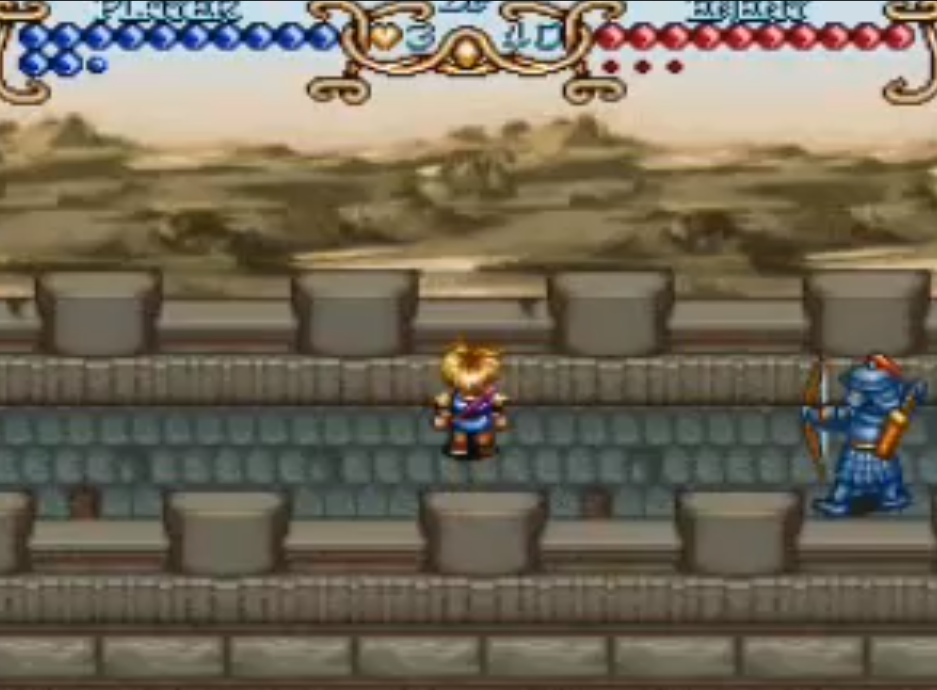
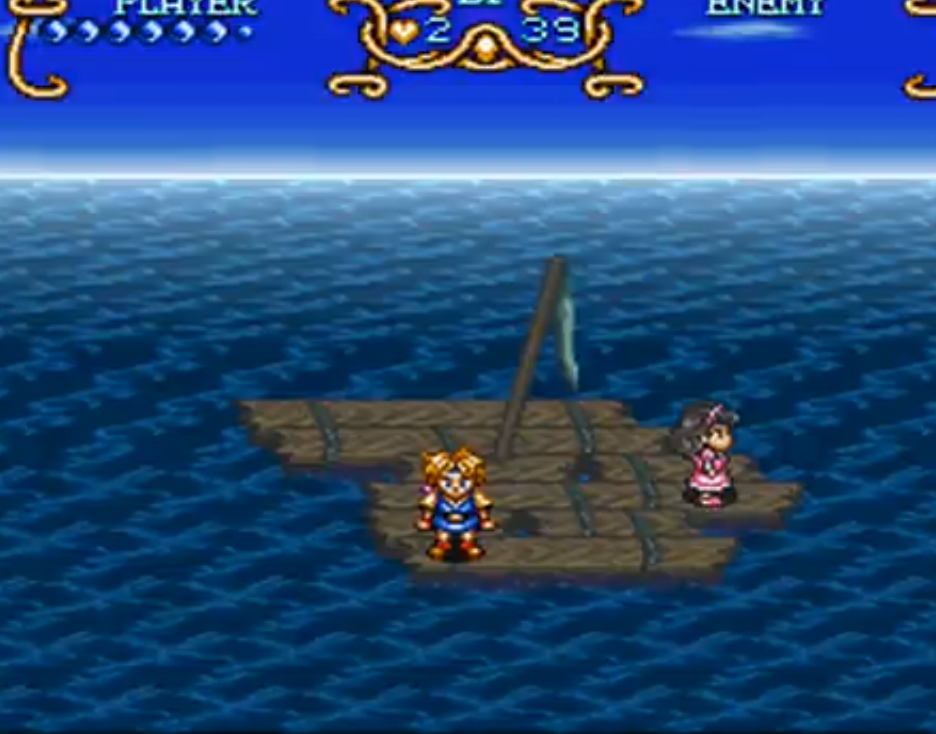






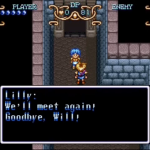
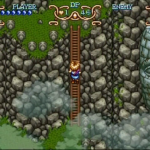

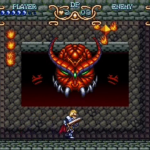

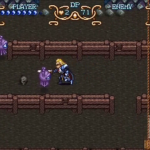
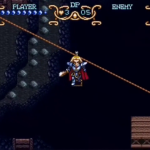

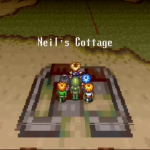
Great review.
What amazes me about this game is how much the story and characters resonate with me, despite an atrocious translation and very little dialogue overall. It shows that you don’t need to hammer a point home though overly drawn out exposition. Modern JRPG developers could learn a thing or two from Quintet’s approach to storytelling.
I’m also impressed that Nintendo didn’t overly censor some of the game’s darker elements. Sure, they changed the slave trade to the “labour trade” but we all know what they meant. You mentioned in your review that this game shows the world is a dark place that you can brighten by pitching in. I came away with a more pessimistic interpretation. This game showed me that the world is a cruel place where humans will exploit each other and despite the player’s best efforts, you can’t solve everyone’s problems. The player never ends the slave trade for example. Worse still, the player is actively rewarded at one point for ratting out an escaped slave, despite the game making it quite clear that the only difference between Will and the slaves is circumstance. Pretty dark, heavy stuff for a Nintendo published SNES game!
This game also deserves recognition for being perhaps the most affordable SNES JRPG that is worth owning (carts can still be had for around $20).
This is one of my favorite SNES games I ever played. I remember my sister used to watch me every time I played. I still remember some of the music to this very day.
The music was fantastic! I just wish there was a bit more of it, since a lot of tracks get reused.
It’s great that so many people got to play this back in the day. Nintendo did a great job of promoting an Enix game that would have otherwise languished in obscurity. It would have been nice if Enix and Nintendo partnered on releasing even more Enix games!
I’ve heard this game referenced often in the SNES community, though never played it. I was looking forward to reading the review and I enjoyed it very much.
Wait, the reader can rank the games reviewed with a star system? I’m guessing we’re ranking the game itself and not the review, right? 😉
I just noticed that myself! I think you’re right, the idea is that we rate the games. Perhaps Masamune can confirm?
Yes, that star system in the upper left hand side is for the readers out there to rate the games, not the review. The star system is also in the articles. I’m trying to see if I can code that out of there though.